What to Know About Curtains and Drapes
Learn about the styles, layering treatments and mounting options for this classic window treatment
Curtains and drapes are soft window treatments that perform the same duties as the cousins they’re often paired with — shades, blinds and shutters — by providing privacy and light control and being a crucial part of a room’s design. But the wide variety of fabrics, patterns, colors and decorative hardware available for curtains and drapes means they can make an even bolder design statement — while adding an element of softness to a space.
“Drapes give more dimension and texture to the space,” says Sheri Stouffer, owner of Finishing Touches, a window treatment studio in Colorado. Read on for a guide to curtain and drapery options and what design professionals have to say about them.
“Drapes give more dimension and texture to the space,” says Sheri Stouffer, owner of Finishing Touches, a window treatment studio in Colorado. Read on for a guide to curtain and drapery options and what design professionals have to say about them.
Drapery. Usually made of heavier material than curtains and often lined with material to block sunlight, drapes exude a more formal feel. They’re usually floor-length or allowed to puddle at the bottom and are often pleated at the top, or header, for an elegant, traditional look. With fabrics ranging from silk and linen to textured damask and velvet, drapes tend to be more subtly patterned than curtains.
Shop for window treatments on Houzz
Shop for window treatments on Houzz
Find Your Style
Rod pocket. In this style, a pocket of fabric is sewn at the header for the rod to go through. Fabric is gathered at the top, concealing the rod. Sometimes a flange, or excess fabric, is left at the top as a decorative element. Rod pocket style provides a more casual look and the panels can be tied back when open. They tend to not be as easy to open and close as other styles. The rod pocket drapes shown here from Budget Blinds are paired with soft-fold Roman shades that have a blackout liner.
What to Know About Window Blinds and Shutters
Rod pocket. In this style, a pocket of fabric is sewn at the header for the rod to go through. Fabric is gathered at the top, concealing the rod. Sometimes a flange, or excess fabric, is left at the top as a decorative element. Rod pocket style provides a more casual look and the panels can be tied back when open. They tend to not be as easy to open and close as other styles. The rod pocket drapes shown here from Budget Blinds are paired with soft-fold Roman shades that have a blackout liner.
What to Know About Window Blinds and Shutters
Tab top. For this style, fabric tabs are sewn into the top of the panel and the rod goes through the tabs. Some tabs tie at the top for a more bohemian, romantic look. Generally a more casual style, tab tops can be dressed up with wraps like the ones seen here in the living room of a home in Chester Springs, Pennsylvania. Designer Ana Gil-Jones worked with the homeowner to choose a delicately flowered embroidered linen for the lined drapery panel and a blue contrasting solid linen sleeve for the tab.
Here’s a look at the living room with the blue-linen-wrapped tabs on the floral drapery. Gil-Jones worked on the interior design of the living room, which was an addition to an 1890s farmhouse. The blue tabs pick up the blue in the fabric panels and complement the area rug.
“My client loved florals, so that was one of the requirements during the fabric selection process, but she wanted a little more depth and substance to the look of the fabric, which is why we decided to go with an embroidered linen,” Gil-Jones says.
What to Know About 5 Popular Types of Window Shades
“My client loved florals, so that was one of the requirements during the fabric selection process, but she wanted a little more depth and substance to the look of the fabric, which is why we decided to go with an embroidered linen,” Gil-Jones says.
What to Know About 5 Popular Types of Window Shades
Ring top. These curtains and drapes hang from a rod by metal, wood or acrylic rings at the top of the fabric. This style affords a more modern feel and is easy to push open and closed. For this weekend house in Healdsburg, California, the pros at Adeeni Design Group used a subdued dot pattern called Galapagos from Ferrick Mason on these ring top linen drapes and Roman shades so the eye would focus on the beautiful view.
Pretty patterned drapes hang from black rings and rod in this living room in a partially renovated home in Wellesley, Massachusetts, with interior design by Eleven Interiors. A bracket supports the rod in the middle over the French doors, a common feature when drapes are hung on doors or a wide window.
Grommet. In this style, metal grommets are punched into the panel’s header so a rod can pass through. This results in soft folds and a curtain or drape that’s easy to push open and closed, similar to a ring top style.
Here are grommet drapes paired with top-down/bottom-up cellular shades.
Ripple fold. This style incorporates deep vertical waves down the drapery panel, resulting in a streamlined, modern look. When choosing ripple folds, look for quality details like memory-blind-stitched hems and weighted bottom corners, which help keep the folds uniform. You also need to decide on the fullness factor, usually ranging from 60% to 100% or higher. The higher the percentage, the more folds or pleats in the drape.
For these ripple fold drapes at a home in Castle Pines, Colorado, Stouffer used a custom no-stitch technique at the top of the drapery and sheers to give them a smooth, elegant look. Along with pleated drapes, ripple fold style works well as a traversing drape on a track or rail, either motorized or opened and closed with a wand.
For these ripple fold drapes at a home in Castle Pines, Colorado, Stouffer used a custom no-stitch technique at the top of the drapery and sheers to give them a smooth, elegant look. Along with pleated drapes, ripple fold style works well as a traversing drape on a track or rail, either motorized or opened and closed with a wand.
Stouffer used memory stitching to get consistent pleating at the bottom. She says almost every drapery she fabricates has memory stitch added.
These ripple fold drapes and sheers hang from rings on rods that extend around a bedroom corner in Portola Valley, California, where the pros at Melinda Mandell Interior Design helped furnish a home for a young family using high-end, handcrafted pieces mostly made locally.
Pleated. Pleated headers are one feature that distinguish drapes from more casual curtains, though some curtains do have pleats. Pleats in general present a more traditional, luxurious aesthetic, with some styles providing a more modern feel. Pinch pleats, also known as French pleats, are like small fans at the top and are made in different widths, called two-finger and three-finger. The drapes and sheers from The Shade Store seen here both have pinch pleats.
Crown pleats, also called tailored, tacked, Parisian or Euro pleats, are a tighter pinch pleat, with the fanned fabric stitched closed at the top. The drapery panels shown here are in the dining room of a home in Glenmoore, Pennsylvania, designed by Gil-Jones. The custom linen drapes are lined with blackout fabric to give them volume, Gil-Jones says, and they’re adorned with a decorative tape. The crown pleats are a more updated version of the traditional pinch pleat, she says.
Here’s a closeup of crown pleats fabricated by the pros at Ocean Custom Drapery, Blinds, Shutters & Shades in Southern California.
The drapery with crown pleats in this living area in a home in Hingham, Massachusetts, is paired with shutters, part of the soothing palette and sea-inspired accents created by the designers at Casabella Interiors.
One of the advantages of using a pro to fabricate drapery is that they have the skill to match pleats to fabric pattern, which is what Stouffer did for this two-finger crown pleat in a bedroom in Denver.
Goblet pleats, like the ones on the drapes shown here from Budget Blinds, are formed with a padded top edge that mimics the shape of a wine glass or goblet, making for an elegant, architectural flow of fabric. Flemish pleats and cartridge pleats are a similar but looser pleat resulting in a streamlined flow.
Box pleats are an elegant style where the pleat is folded in front and gathered in back, making for a flat header and crisp, smooth folds flowing down the drapery front.
Cafe. These are curtains that cover the bottom half of a window, often used in kitchens and bathrooms, such as this bath with a stellar view of Lake Tahoe in California. The pros at Jute Interior Design made sure the interior was cozy and comfortable after a gut renovation of the home was done to make room for an extended family and maximize the amazing views.
Valances and cornices. Valances are short pieces of material on a rod at the top of a curtain or drapery. Cornices are a type of valance with fabric attached to a box-like structure usually made of wood. Both are intended to add more interest to the window treatment as well as to conceal hardware and block light at the top.
The patterned valance shown here matches the drapery in one of the bedrooms of a 1920s house in Austin, Texas, that was remodeled and updated with the help of the pros at Ashby Collective.
“We wanted to follow a traditional application by adding a valance to honor the period of the home,” Ashby designer Anne Grandinetti says. “These are custom-made window treatments from our in-house workroom.”
The patterned valance shown here matches the drapery in one of the bedrooms of a 1920s house in Austin, Texas, that was remodeled and updated with the help of the pros at Ashby Collective.
“We wanted to follow a traditional application by adding a valance to honor the period of the home,” Ashby designer Anne Grandinetti says. “These are custom-made window treatments from our in-house workroom.”
This window treatment in a teen’s room in Menlo Park, California, includes a vibrant floral cornice that picks up other tones in the space.
Layering Treatments
Curtains and drapes on their own can be a room’s standout feature, and when paired with other window treatments like shades and blinds, they’re like the final accessory that makes an outfit perfect. “Adding [drapery] panels to any space helps bring that extra layer of elegance,” says designer Amy Peltier, who gave this primary bathroom in South Pasadena, California, that elegant layer.
The tub area was part of a remodel in which Peltier injected sophistication and glamour into the space using subtly patterned drapes and shades. “With all the stone detail in this project, it can make the space feel cold,” she says. “Our main focus was on privacy and warming the space. We used Roman shades that fit to the window and fold up. Then panels for an aesthetic and feminine touch.”
Curtains and drapes on their own can be a room’s standout feature, and when paired with other window treatments like shades and blinds, they’re like the final accessory that makes an outfit perfect. “Adding [drapery] panels to any space helps bring that extra layer of elegance,” says designer Amy Peltier, who gave this primary bathroom in South Pasadena, California, that elegant layer.
The tub area was part of a remodel in which Peltier injected sophistication and glamour into the space using subtly patterned drapes and shades. “With all the stone detail in this project, it can make the space feel cold,” she says. “Our main focus was on privacy and warming the space. We used Roman shades that fit to the window and fold up. Then panels for an aesthetic and feminine touch.”
Here are the Roman shades that coordinate with the draperies in the tub area.
Crisp white draperies pair with flat-fold Roman shades on new windows in the bedroom of a historical Craftsman in Atlanta, modernized with the help of the designers at Wynter House Designs.
The pros at Duffs Custom Window Treatments in Nashville, Tennessee, layered cordless blackout Roman shades with soft off-white drapes to beautify this space as well as control the light coming in.
Soft white pinch-pleat drapes hung close to the ceiling to maximize height are paired with white shutters and stand out against the geometric-patterned wallpaper in this Osterville, Massachusetts, bedroom by Casabella Interiors.
In the same home, the designers framed seaside views with coastal blue-striped pleated drapes and bright white shutters.
Mounting Options
Unlike shades, blinds or shutters, which can be directly mounted to the inside or outside of a window frame, curtains and drapes hang from rods attached to the wall above the frame or even from the ceiling in the case of traversing drapes on a track, as seen here. The pros at Finishing Touches mounted two track-type rods on the ceiling with enough space between them for sheers and drapes.
When putting up curtains and drapes, decide how long you want the fabric to be in order for it to hang gracefully. Rods and finials — decorative knobs added to the ends of the rods — are another way to add interest.
Unlike shades, blinds or shutters, which can be directly mounted to the inside or outside of a window frame, curtains and drapes hang from rods attached to the wall above the frame or even from the ceiling in the case of traversing drapes on a track, as seen here. The pros at Finishing Touches mounted two track-type rods on the ceiling with enough space between them for sheers and drapes.
When putting up curtains and drapes, decide how long you want the fabric to be in order for it to hang gracefully. Rods and finials — decorative knobs added to the ends of the rods — are another way to add interest.
Finials and rods come in many finishes and shapes, such as these examples from Budget Blinds.
Conventional rods. Fixed-length rods and telescoping rods that can be extended as needed are the types typically available in stores. They can be a single or double configuration, the latter for using sheers behind drapes. They can be made of materials such as iron, wood and acrylic. The rod sits in a bracket screwed to the wall, sometimes with middle support brackets for extra-wide windows or doors. Decorative finials at the ends unscrew to allow curtains to slide on and off. Tension rods have a spring mechanism to hold them in place in the window frame.
Some window treatment companies offer custom rods that extend around corners, particularly useful for bay windows, such in as the dining area shown here in a renovated Kansas City, Kansas, home that got expert help from Bria Hammel Interiors.
Some window treatment companies offer custom rods that extend around corners, particularly useful for bay windows, such in as the dining area shown here in a renovated Kansas City, Kansas, home that got expert help from Bria Hammel Interiors.
This bedroom in the same home got similar corner treatment with pleated draperies hung close to the ceiling.
French return rods. Also called French poles, these rods are curved on the ends and return to the wall. Stouffer says this is a European look that’s very popular right now with her clients.
Here, sheers hung from rings billow from a French return rod in a bedroom in Evanston, Illinois, designed by Elizabeth Stamos Design.
Here, sheers hung from rings billow from a French return rod in a bedroom in Evanston, Illinois, designed by Elizabeth Stamos Design.
Traverse rods and tracks. These utlilize a pulley system and are commonly used when there’s a wide expanse of windows to cover. The rods can be ceiling- or wall-mounted and drapes hang from pins or clips attached to the rod. This style makes it easy to open and close drapes and keeps the fabric folds uniform. Traverse rods can be decorative or inconspicuous. A cord or wand can be used to move the drapery manually, and this treatment also lends itself to motorization, where a mechanism in the track allows the fabric panels to be operated remotely using wireless technology.
Double traverse rods can accommodate sheers behind drapes, as seen here in a bedroom in Castle Pines, Colorado, where designer Stouffer ceiling-mounted double 90-degree bent rods with traversing ripple fold sheers and linen drapes.
Double traverse rods can accommodate sheers behind drapes, as seen here in a bedroom in Castle Pines, Colorado, where designer Stouffer ceiling-mounted double 90-degree bent rods with traversing ripple fold sheers and linen drapes.
Here’s a closeup look at the hardware used for custom ripple fold traversing drapes fabricated by Finishing Touches in a home in Castle Pines, Colorado.
Another closeup of the same hardware and ripple fold drapery shows a particular technique for handling drapes in a corner. The hardware, called a butt master carrier, is used when curtain and drapery pleats are intended to continue around a corner rather than stay flat where they meet in the corner, according to Drapery Rods Direct.
Traversing drapery hardware comes in a variety of finishes and designs, such as these from Somfy, a company that produces motorized window treatments.
Is It DIY?
You can certainly buy curtains and hardware online or from a home goods store and then install the rod and hang the curtains yourself. But unless you have mad sewing skills, customizing drapery with pleats, memory stitching, weighted hems and other features might best be left to a window treatment pro.
The grommet silk drapes here hang from custom rods made by Highland Forge, which hand-fabricates curtain and drapery hardware in Atlanta. The window treatment includes top-down/bottom-up honeycomb shades mounted inside the window frame.
You can certainly buy curtains and hardware online or from a home goods store and then install the rod and hang the curtains yourself. But unless you have mad sewing skills, customizing drapery with pleats, memory stitching, weighted hems and other features might best be left to a window treatment pro.
The grommet silk drapes here hang from custom rods made by Highland Forge, which hand-fabricates curtain and drapery hardware in Atlanta. The window treatment includes top-down/bottom-up honeycomb shades mounted inside the window frame.
How to Clean Curtains and Drapes
Depending on the fabric, some curtains can be washed in a machine on the gentle cycle or by hand. Always check care labels and consult the manufacturer if the product was bought ready-made. Contact your designer if the curtains or drapes are custom. For everyday dust control, you can use the upholstery attachment on a vacuum for most curtains and drapes. For heavy-duty cleaning of expensive drapery, find a reputable professional drapery cleaner. Many manufacturers have cleaning guides on their websites that detail how their products should be cleaned.
Depending on the fabric, some curtains can be washed in a machine on the gentle cycle or by hand. Always check care labels and consult the manufacturer if the product was bought ready-made. Contact your designer if the curtains or drapes are custom. For everyday dust control, you can use the upholstery attachment on a vacuum for most curtains and drapes. For heavy-duty cleaning of expensive drapery, find a reputable professional drapery cleaner. Many manufacturers have cleaning guides on their websites that detail how their products should be cleaned.
The pleated drapery in this Pasadena, California, dining room designed by Peltier adds a splash of color in a ranch home that was in need of an update. Peltier used lots of pattern throughout the home, combining traditional elements with fresh color, such as the vibrant blue drapes that stand out against the room’s neutral tones.
Your turn: Share your tips on selecting, installing and caring for drapery and curtains in the Comments.
More on Houzz
Read more about window treatments
Read more decorating guides
Browse millions of photos for inspiration
Find home professionals for your project
Shop for your home
Your turn: Share your tips on selecting, installing and caring for drapery and curtains in the Comments.
More on Houzz
Read more about window treatments
Read more decorating guides
Browse millions of photos for inspiration
Find home professionals for your project
Shop for your home

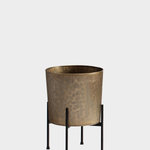
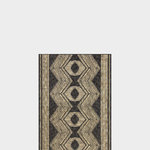
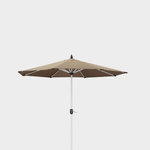
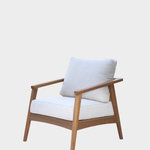





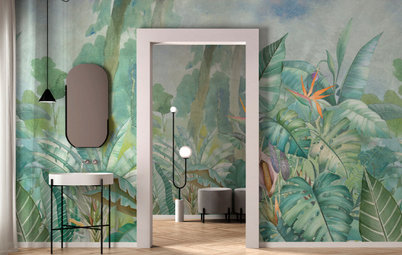

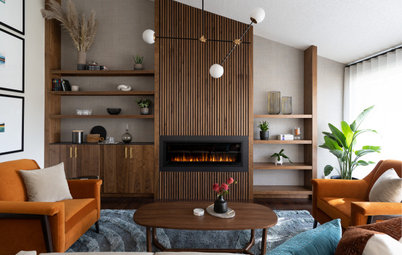
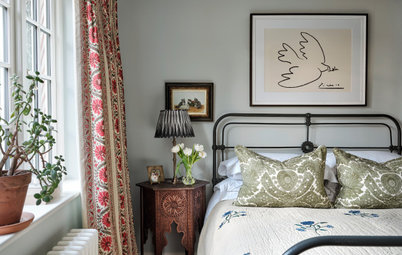
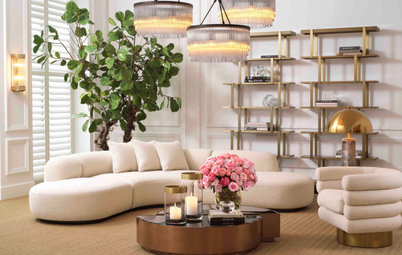
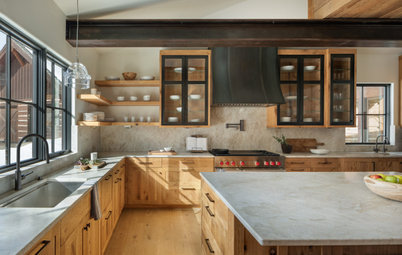
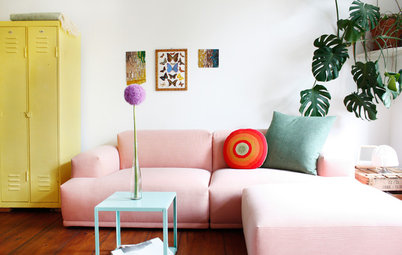
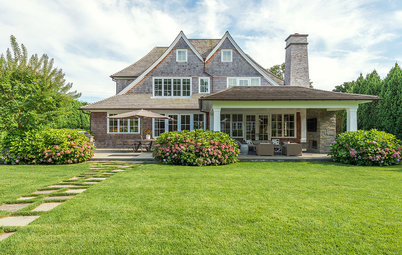
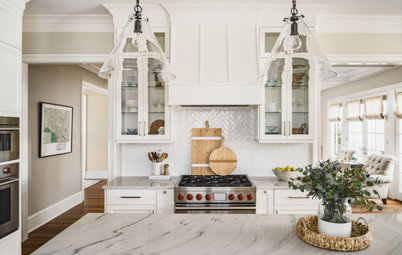

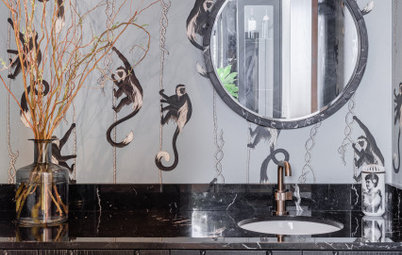
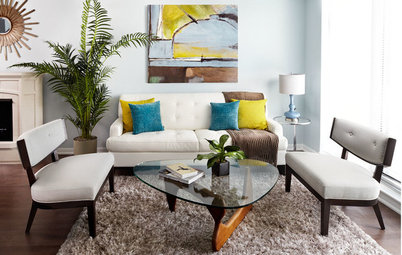
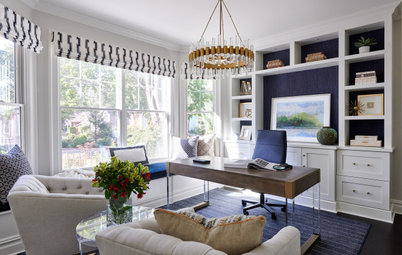
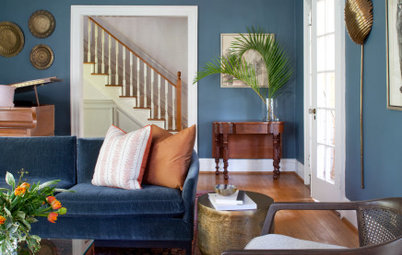
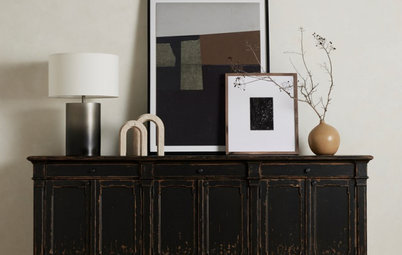






When purchased ready-made, curtains and drapes are usually sold in panels. They can be opened and closed manually, and heavier drapes are sometimes operated with a wand or are mechanized on a track. Panels usually range from 63 to 120 inches in length. A rule of thumb for drapery width is that the fabric should be two to 2½ times the width of the window, or three times as wide for sheers, says Stouffer of Finishing Touches.
Curtains. Curtains come in a variety of fabrics, from cotton to rayon to linen. They range in thickness from sheer to blackout for light control and privacy. Curtains come in an array of lengths and patterns and are usually sold in pairs. They’re hung from a rod by a pocket of fabric, fabric tabs, grommets or rings. They’re often used with shades for optimal privacy and light protection.
Find a window covering professional near you